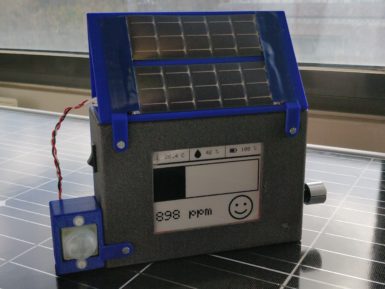
CircuitMess Spencer
DIY voice assistant that teaches you about microcomputers and electronics, sound processing, IoT, artificial intelligence, voice recognition and speech synthesis!
Follow the instructions here!
Overview
Spencer is a DIY voice assistant that talks, lights-up, connects to the internet, and understands simple voice commands.
He also has a funny personality, tells jokes, and finds new ones online.
The LED display on Spencer’s face has a 144-pixel LED grid that can show data, custom icons, animations, and scrolling text
Things you can do with Spencer:
- Ask about the weather forecast for your area
- Hear a joke
- Ask him to sing you a song
- Set a stopwatch
- Make Spencer display custom animations
- Laugh at his corny popular culture references
Talk to Spencer!
Spencer has a microphone and understands what you say (like, REALLY understands).
You can code new functions that will be triggered when you say certain sentences and words.
Get Inspired

Just a simple and enjoyable autonomous greenhouse

Humans are animals and like all animals, we evolved in mostly outdoor conditions where the air is nice and fresh. But modern society keeps most of us indoors the vast majority of the time, which could have negative health effects. There are many potential hazards, including a lack of sunlight and psychological effects, but CO2 may pose a more tangible risk. To keep tabs on that risk within classrooms, a team from Polytech Sorbonne built this small CO2 monitor. This CO2 monitor performs two functions: it shows anyone nearby the CO2 levels in the area and it uploads that data over LoRaWAN to a central hub that can track the levels across many locations. A school could, for example, put one of these CO2 monitors in every classroom. An administrator could then see the CO2 levels in every room in real time, along with historical records. That would alert them to immediate dangers and to long term trends. At the heart of this CO2 monitor is an Arduino MKR WAN 1310 development board, which has built-in LoRa® connectivity. It uses a Seeed Studio Grove CO2, temperature, and humidity sensor to monitor local conditions. To keep power consumption to a minimum, the data displays on an e-ink screen and an Adafruit TPL5110 timer only wakes the device up every ten minutes for an update. Power comes from a lithium-ion battery pack, with a DFRobot solar charger topping up the juice. It uploads data through The Things Network to a PlatformIO web interface. An Edge Impulse machine learning model detects anomalies, so it can sound a warning even if nobody is watching. The enclosure is 3D-printable.







